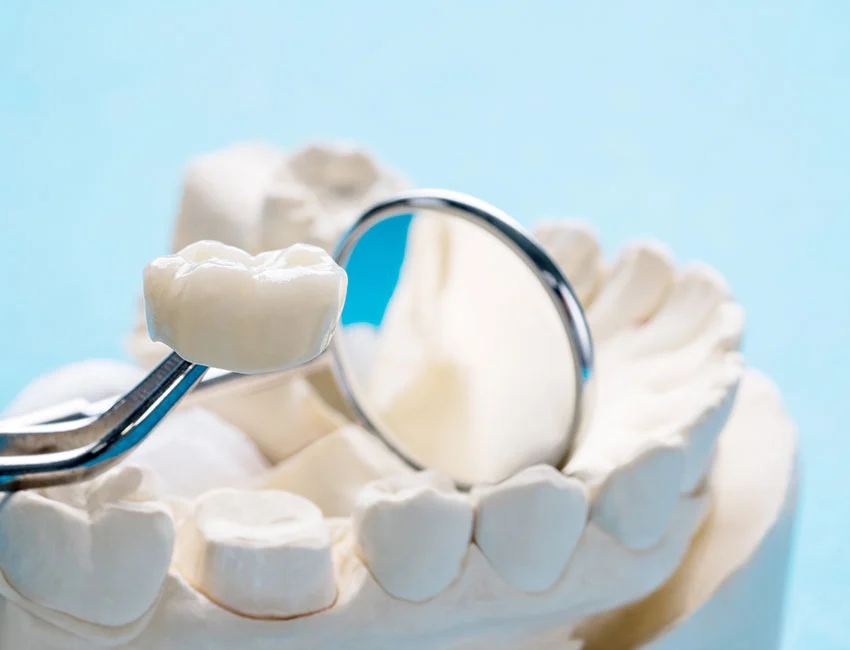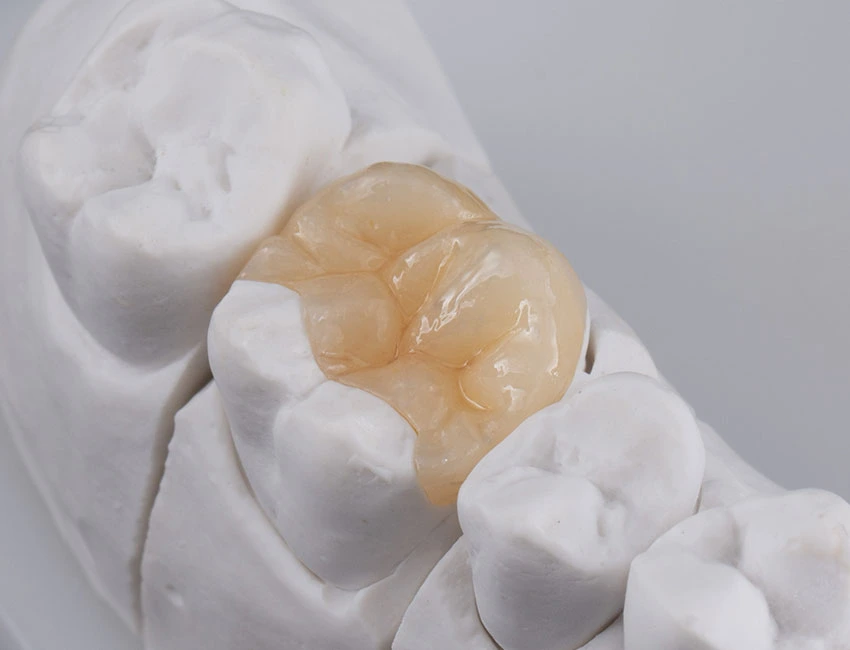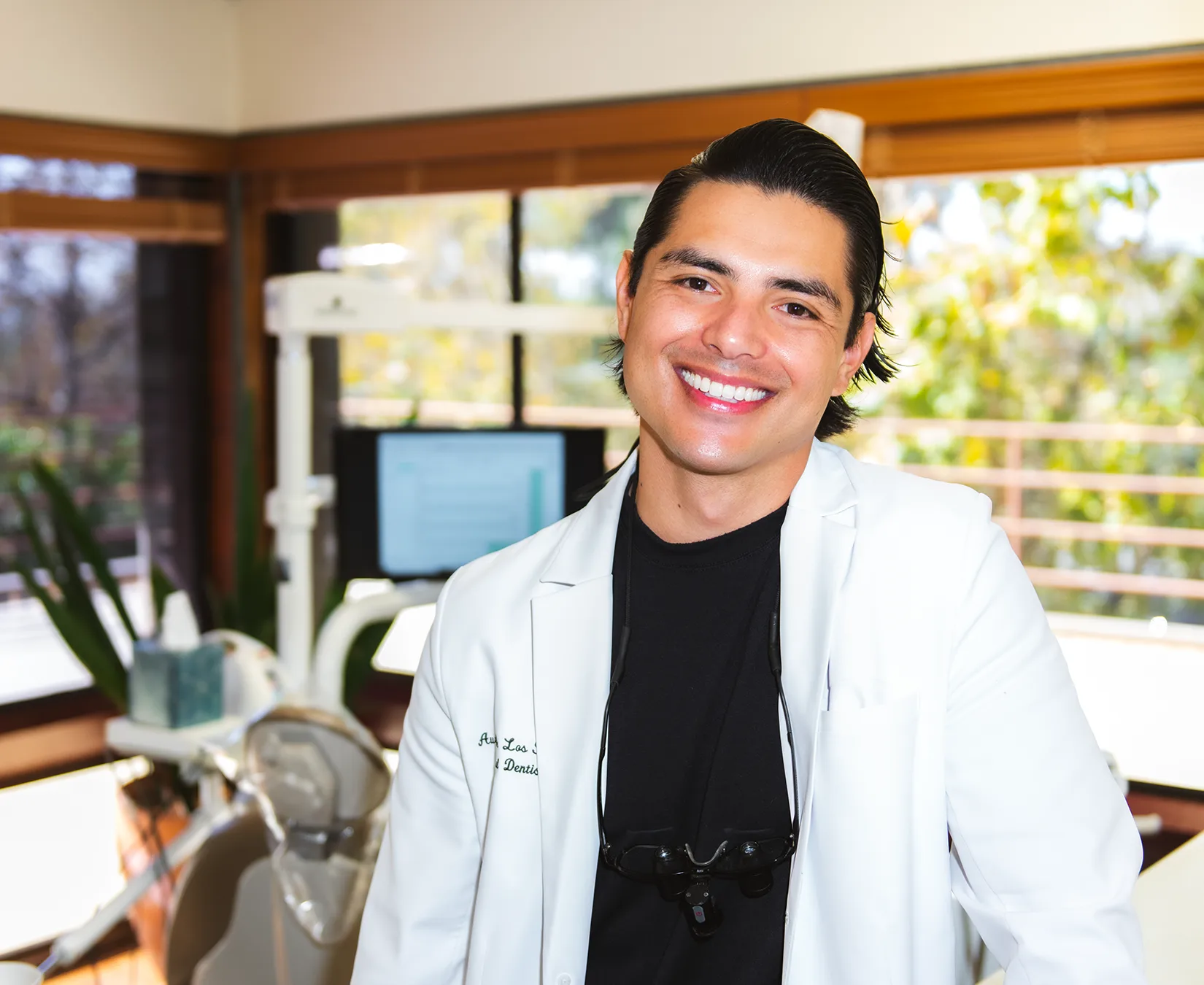
Understanding Crowns, Inlays, and Onlays
Crowns, inlays, and onlays are custom-made restorations designed to repair and protect damaged teeth. These treatments preserve natural tooth structure while restoring function and aesthetics. Crowns cover the entire visible portion of a tooth, while inlays and onlays cover smaller areas, fitting within or over the tooth’s cusps.
CAll (310) 457-9292Benefits of Crowns, Inlays, and Onlays
1.
Strength & Protection
2.
Restored Function
3.
Enhanced Aesthetics
4.
Durable and Long Lasting
Each inlay, onlay, and crown is custom-made to fit your unique tooth anatomy. This ensures optimal function and a natural appearance that blends seamlessly with your smile.
The Crown, Inlay, and Onlay Process
Malibu Dentistry uses state-of-the-art CAD/CAM technology for efficient, precise restorations. Here’s what to expect:
- Consultation and examination: Our highly skilled dentist evaluates your tooth and recommends the most suitable treatment.
- Tooth preparation: The affected tooth is cleaned and shaped to accommodate the restoration.
- Digital impressions: We use advanced scanning technology to create a 3D model of your tooth.
- Design and fabrication: Your custom restoration is designed and milled on-site using our CAD/CAM system.
- Placement: The restoration is bonded to your tooth, ensuring a perfect fit and natural appearance.
- Final adjustments: We check your bite and refine it for optimal comfort and function.
Types of Crowns, Inlays, and Onlays
Porcelain crowns
Zirconia crowns
Ceramic inlays and onlay
Gold inlays and onlays

Signs You May Need a Crown, Inlay, or Onlay
These restorations may be recommended if you experience:
- Large cavities that can’t be adequately filled
- Cracked, chipped, or fractured teeth
- Weakened teeth due to root canal treatment
- Severe tooth wear or erosion
- Cosmetic concerns with tooth shape or color
If you’re experiencing any of these issues, consult your expert dentist in Malibu, CA, to determine the best treatment option.
Trusted by Families Across Malibu, CA

Why Choose Malibu Dentistry for Crowns, Inlays, and Onlays
Dr. Austin, a Malibu-based dental specialist, brings extensive experience to restorative dental procedures. Our practice utilizes advanced CAD/CAM technology for same-day restorations, ensuring efficient, precise care. We prioritize patient comfort and use biocompatible materials for long-lasting, natural-looking results.
Restore Your Smile Today
Don’t let a damaged or unsightly tooth hold you back. Restore your smile’s beauty and function with a custom dental crown from Malibu Dentistry.
Don’t let damaged teeth affect your confidence or oral health. Contact Malibu Dentistry to schedule a consultation with Dr. Austin, your trusted dentist in Malibu, CA. Experience the difference between personalized, high-quality restorative care in a comfortable, state-of-the-art environment.
Frequently Asked Questions
If you have any questions, we’ve got answers.
With proper care, these restorations can last 10-15 years or more.
No, we use local anesthesia to ensure your comfort during the treatment.
Yes, once the restoration is placed, you can eat and drink as usual.
What Sets Us Apart
Committed to Exceptional Service
Discover the difference advanced technology, a full suite of services, and exceptional quality can make in your dental care – all tailored to give you a healthier, happier smile.
Highest Level of Dental Care
Friendly and Caring Team
Insurance & Easy Payment Plans
Schedule Your Dentist Appointment
Take the first step toward a happier, healthier smile.
Questions Answered on This Page
- Understanding Crowns, Inlays, and Onlays
- Benefits of Crowns, Inlays, and Onlays
- The Crown, Inlay, and Onlay Process
- Types of Crowns, Inlays, and Onlays
- Signs You May Need a Crown, Inlay, or Onlay
- Why Choose Malibu Dentistry for Crowns, Inlays, and Onlays
- Restore Your Smile Today
- Frequently Asked Questions
Definition of common dental crown terminology
Dental restorations: Restorative dentistry focuses on repairing or replacing damaged or missing teeth.
Dental Implants: A dental implant is a small post, usually made of titanium, that serves as a substitute for the root of the tooth.
Root Canal: Root canal is a treatment to repair and save a badly damaged or infected tooth instead of removing it.

About Our Dentistry
- CA (License 108293). View License Information
- Insurance: We work with most insurance providers.
- No Insurance? No problem call (310) 457-9292 for more information.
- Financing Options: We offer a wide range of dental financing options.
- We serve patients from the following counties: Los Angeles
- We serve patients from the following cities: Malibu
- Have Questions? Please feel free to contact us at (310) 457-9292
Are you struggling with damaged or decayed teeth that affect your smile and oral function? Crowns, inlays, and onlays offer effective solutions to restore your teeth’s strength, shape, and appearance.
